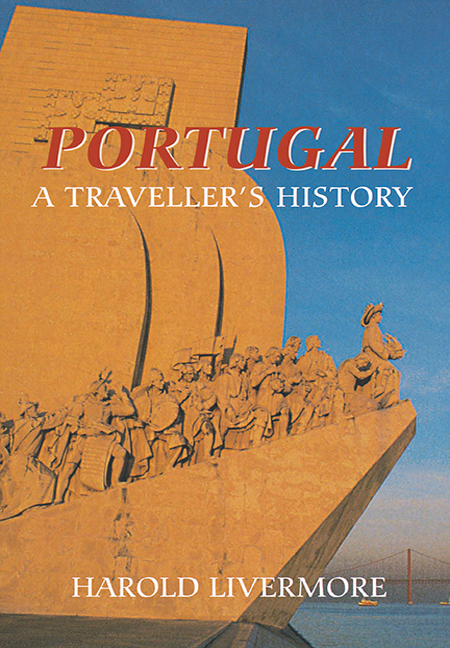Book contents
- Frontmatter
- Contents
- List of Illustrations
- Foreword
- 1 Introduction
- 2 Portugal in History
- 3 Before Portugal
- 4 Islamic Portugal
- 5 Architecture
- 6 Painting
- 7 Music
- 8 Birds
- 9 Fishing
- 10 Portuguese Wines
- 11 Lisbon
- 12 North from Lisbon
- 13 Oporto
- 14 North of Oporto
- 15 Interior Portugal
- 16 Alentejo
- 17 Algarve
- Afterword
- Index
- Frontmatter
- Contents
- List of Illustrations
- Foreword
- 1 Introduction
- 2 Portugal in History
- 3 Before Portugal
- 4 Islamic Portugal
- 5 Architecture
- 6 Painting
- 7 Music
- 8 Birds
- 9 Fishing
- 10 Portuguese Wines
- 11 Lisbon
- 12 North from Lisbon
- 13 Oporto
- 14 North of Oporto
- 15 Interior Portugal
- 16 Alentejo
- 17 Algarve
- Afterword
- Index
Summary
In early times the Castle of St George and the mosque/cathedral were the centre of Lisbon. The eastern side was cast in a secondary part by the epic of the Discoveries and the growth of Atlantic trade. King John V, the Most Faithful, wishing to have a permanent Portuguese cardinal, erected Occidental Lisbon as the see of his Patriarch: in the nineteenth century the trend was continued with the opening of the Avenida and the central station of the Rossio. To the east, there was no Oriental Lisbon: Pombal seems to have thought of the iron foundries as a potential industrial belt, a tendency encouraged in the twentieth century by the emergence of factories along the water-front. This has now been reversed, partly by the establishment of the airport at the Portela de Sacavém and then by the removal of the main railway-terminus to Santa Apolónia. The commemoration of Vasco da Gama's opening of the sea-route to India was the occasion for an exhibition on a large scale and the building of the Vasco da Gama Bridge completed in 1998, with two elegant high spans and a long causeway skimming the water to Montijo on the Outra Banda, giving access to the Alentejo and Algarve and relieving pressure on the crowded first bridge. The opportunity was seized to create a new suburb named Oriente, with a graceful station and a forest of palm-trees planted for the occasion.
The main railway-line follows the north bank of the Tagus to Santarém. The main road to the centre and north diverges beyond Vila Franca de Xira, which until 1966 was the lowest point at which the Tagus was crossed by road. The river here has an extensive water-plain broken up into islets running for nearly twenty miles – the lezirias – giving some of the most fertile land in Portugal. They were formerly royal property, but were privatised in favour of a company in 1836. Vila Franca is the centre of cattle-country. The mounted campino, in his stocking-cap and waistcoat, controls the herds of cattle with his lance. For the festivities in early July he decks himself in a green cap and red waistcoat. Portuguese bull-fighting is a risky display of horsemanship, punctuated by teams of teasers on foot. The victim, though bewildered, is not killed, but recycled, if that is the word.
- Type
- Chapter
- Information
- Portugal: A Traveller's History , pp. 102 - 123Publisher: Boydell & BrewerPrint publication year: 2004



